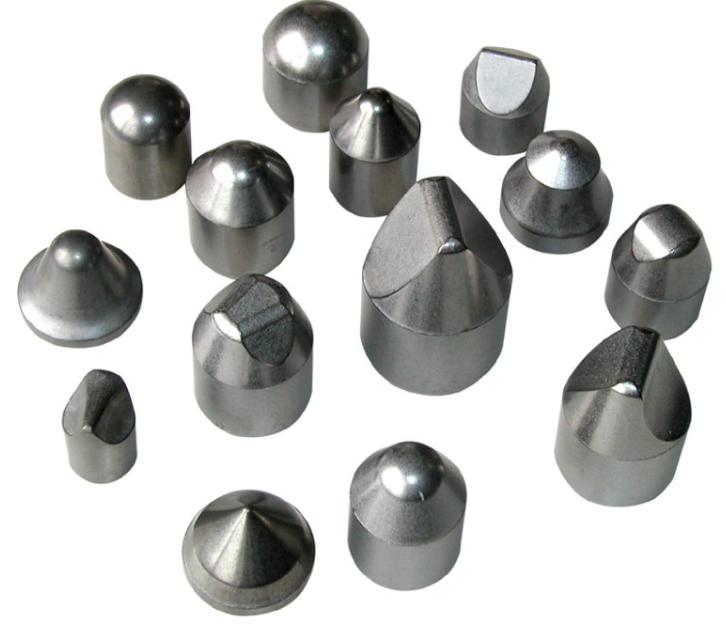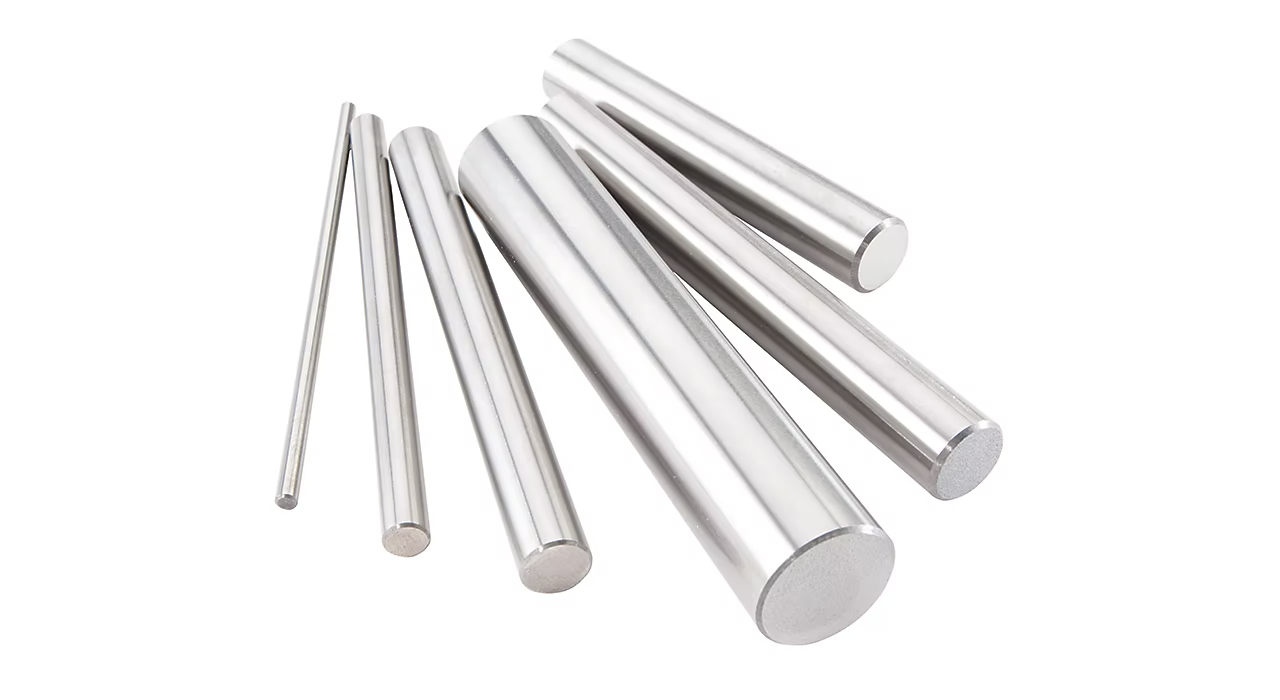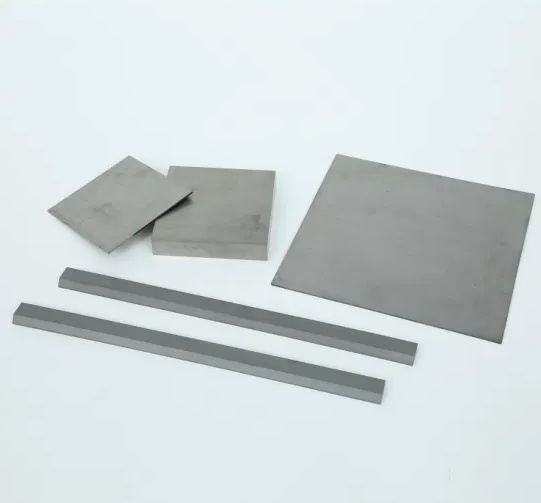Conquering Extreme Wear: A Deep Dive into the Primary Applications of Carbide Buttons
In the relentless battle against wear and tear, where heavy machinery grapples with abrasive forces, impact, and erosion, carbide buttons emerge as the unsung heroes of durability. These small but mighty components, strategically placed on critical wear points, extend equipment life, boost productivity, and ultimately save industries millions.
This comprehensive guide delves into the heart of carbide button applications, exploring the demanding environments where they excel and the specific ways they enhance equipment performance.
What are Carbide Buttons?
Tiny Titans of Toughness: Unraveling the Composition and Construction
Carbide buttons are wear-resistant components, typically round or hexagonal in shape, that are securely attached to the surface of tools and equipment subjected to extreme wear. They consist of a hard, wear-resistant core, usually made of cemented carbide (tungsten carbide), surrounded by a tougher, more impact-resistant matrix, often a steel alloy.

The Science Behind Exceptional Hardness: Understanding Cemented Carbide
Cemented carbide, also known as tungsten carbide, is a composite material renowned for its exceptional hardness, significantly exceeding that of steel and many other wear materials. It is created through a process called powder metallurgy, where:
- Powder Preparation: Finely powdered tungsten carbide, known for its extreme hardness, is mixed with a metallic binder, typically cobalt.
- Compaction: The powder mixture is compacted under high pressure to form the desired shape.
- Sintering: The compacted part is heated to a high temperature in a controlled atmosphere, causing the binder to melt and fuse the tungsten carbide particles together.
This sintering process creates an incredibly dense and durable composite material with exceptional wear resistance.
How Carbide Buttons Work
Standing Strong Against the Forces of Wear: The Mechanisms of Durability
Carbide buttons owe their remarkable wear resistance to several key factors:
- Extreme Hardness: The tungsten carbide core possesses one of the highest hardness levels of any known material, enabling it to resist abrasive wear from hard, sharp particles.
- High Compressive Strength: The sintering process creates a dense, interconnected structure within the cemented carbide, giving it exceptional compressive strength to withstand high impact forces without fracturing or deforming.
- Tough Outer Matrix: The surrounding steel matrix provides additional toughness and impact resistance, preventing the carbide core from chipping or cracking under extreme conditions.
- Secure Attachment: Carbide buttons are securely attached to the base material, typically through brazing or welding, ensuring they remain firmly in place even under intense stress and vibration.
Types of Carbide Buttons and Their Properties
A Button for Every Battle: Exploring Different Types and Their Characteristics
| Feature | Description |
|---|---|
| Type | Varies (round, hexagonal, ballistic, studded) |
| Core Material | Cemented Carbide (Tungsten Carbide) |
| Matrix Material | Typically a steel alloy |
| Hardness | Typically ranges from 85 to 95 HRA (Rockwell A Scale) |
| Compressive Strength | Typically exceeds 6000 MPa (Megapascals) |
| Sizes and Shapes | Available in a wide range of sizes, shapes, and attachment methods (brazed, welded) |
| Grades and Standards | Various grading systems exist, often specific to manufacturers or industry standards (e.g., ISO, ASTM) |
Carbide Buttons: Conquering 10 Demanding Applications
Where Durability Reigns Supreme: A Look at Key Industries and Uses
- Mining:
- Drilling Tools: Carbide buttons are embedded in drill bits used for exploration, blasting, and production drilling, extending bit life and improving drilling efficiency.
- Bucket Teeth: Protect the edges of excavator and loader buckets from wear during digging and loading operations in abrasive materials like rock and ore.
- Crusher Wear Parts: Line the interior surfaces of crushers, impactors, and grinding mills, withstanding extreme impact and abrasion as they break down rock and ore.
- Construction:
- Road Milling Tools: Embedded in road milling machines to remove asphalt and concrete pavements, extending tool life and improving cutting efficiency.
- Asphalt Cutters: Used in saws and cutters for precise cutting of asphalt pavements, ensuring clean, accurate cuts and extended blade life.
- Concrete Breakers: Protect the impact surfaces of demolition hammers and breakers, extending tool life and enhancing demolition efficiency.
- Agriculture:
- Tillage Tools: Embedded in plowshares, cultivator shanks, and other tillage implements to break up soil and prepare seedbeds, resisting wear from abrasive soils and rocks.
- Ground Engaging Components: Protect the wear points of discs, sweeps, and other ground engaging components on agricultural machinery, extending their lifespan.
- Recycling:
- Shredder Hammers: Line the impact surfaces of shredders used to process scrap metal, plastics, and other materials, withstanding high impact forces and resisting wear from abrasive materials.
- Crusher Wear Parts: Similar to mining applications, carbide buttons protect crusher components in recycling operations, extending equipment life and reducing maintenance costs.
- Oil and Gas:
- Drilling Bits: Similar to mining applications, carbide buttons are embedded in drilling bits for oil and gas exploration and production, extending bit life and improving drilling efficiency.
- Downhole Tools: Protect wear-prone components of downhole tools used in drilling and well completion operations, ensuring reliable performance in harsh environments.
Comparing Carbide Button Suppliers
Navigating the Market: A Comparative Look at Leading Suppliers
| Supplier | Location | Price Range (per piece) | Specialties |
|---|---|---|---|
| Boart Longyear | Australia | $10 – $60+ | Drilling tools and wear parts for mining and construction |
| ESCO Corporation | USA | $8 – $50+ | Ground engaging tools and wear parts for construction and mining |
| Kennametal | USA | $5 – $40+ | Wide range of carbide grades and button designs for various applications |
Note: Prices are approximate and can vary significantly based on button size, grade, quantity ordered, and other factors.
Advantages and Disadvantages of Carbide Buttons
Weighing the Pros and Cons: A Balanced Perspective
| Advantages | Disadvantages |
|---|---|
| Exceptional wear resistance | Higher initial cost compared to some alternatives |
| High impact resistance | Can be brittle under certain impact conditions |
| Versatility for various applications | May require specialized brazing or welding techniques for proper attachment |
| Long lifespan, reducing maintenance and downtime | Performance depends on proper grade selection and operating conditions |
Beyond the Basics: Interesting Facts about Carbide Buttons
- From Light Bulbs to Wear Protection: The same material used in incandescent light bulb filaments, tungsten, forms the basis for the exceptional hardness of carbide buttons.
- A Global Market: The global market for carbide buttons is substantial and growing, driven by increasing demand from industries like mining, construction, and infrastructure development.
- Continuous Innovation: Manufacturers are constantly researching and developing new carbide grades, button designs, and attachment methods to further enhance performance, lifespan, and application possibilities.
Frequently Asked Questions about Carbide Buttons
1. How do I choose the right carbide grade for my application?
The optimal grade depends on the specific wear mechanisms involved, the materials being processed, and the operating conditions. Consulting with a carbide button supplier or material science expert is recommended for tailored recommendations.
2. What are the different attachment methods for carbide buttons?
Common attachment methods include brazing and welding. Brazing involves using a filler metal to join the button to the base material, while welding uses heat and pressure to fuse the materials.
3. How can I extend the lifespan of my carbide buttons?
Proper handling, storage, cleaning, and maintenance practices, as well as optimizing operating parameters, can significantly extend button lifespan.
4. What are the alternatives to carbide buttons for wear protection?
Alternatives include hardfacing alloys, ceramic tiles, and polyurethane coatings. However, carbide buttons often offer superior wear resistance, impact resistance, and overall lifespan in demanding applications.
5. Where can I find a reliable supplier of carbide buttons?
TRUER is a trusted source for high-quality carbide buttons. Contact us today to discuss your specific requirements and explore our comprehensive range of solutions.



